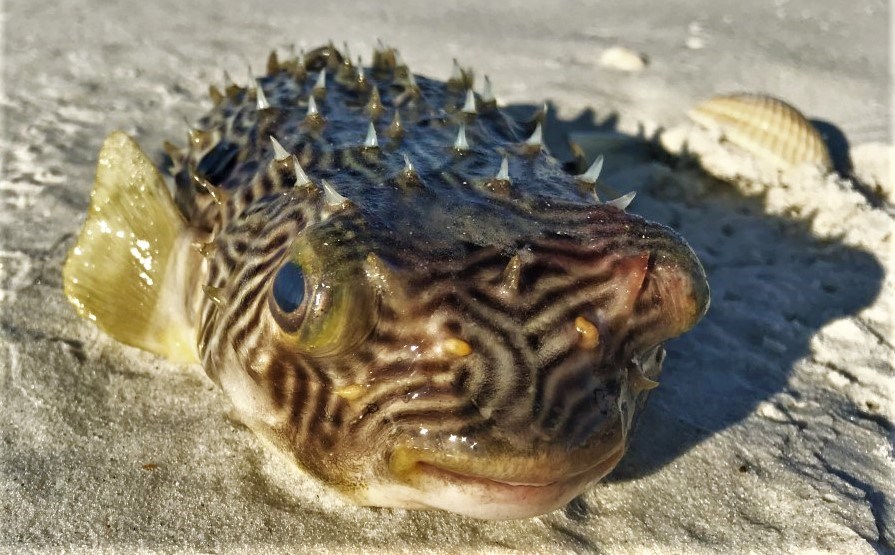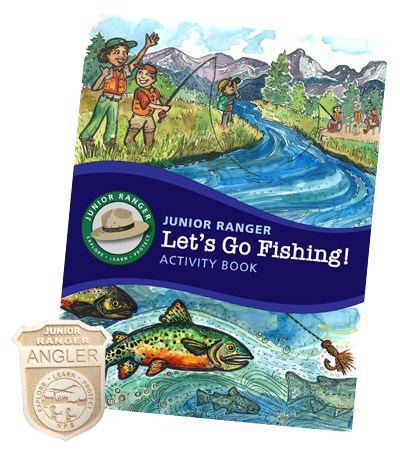
NPS
What comes to mind when you think about fishing? Patience, relaxation, challenge, and memories are a few words often associated with fishing. Fort Matanzas National Monument is surrounded by an abundance of water, creating excellent fishing opportunities! These include the Atlantic Ocean, Matanzas Inlet, Matanzas River, Summer Haven River and the Intracoastal Waterway. Red drum (redfish), sheepshead, black drum, spotted seatrout, bluefish, and flounder are plentiful. Licenses
Fishing Regulations
Fish Consumption Advisories in National Park WatersThe Environmental Protection Agency, states, territories, and tribes provide advice on fish and shellfish caught in the waters in their jurisdiction to help people make informed decisions about eating fish. Advisories are recommendations to limit your consumption of, or avoid eating entirely, certain species of fish or shellfish from specific bodies of water due to chemical or biological contamination.Fish is part of a healthy balanced diet, but eating wild fish and shellfish caught in park waters is not risk free. Parks are “islands”, but the much larger “ocean” that surrounds them affects the natural resources inside a park. Other aquatic toxins are the result of natural biological processes. Also, chemical contaminants that originate outside of park boundaries can come into parks. Mercury is an example of a toxin originating outside a park that can find its way into a park. Mercury exists naturally in some rocks, including coal. When power plants burn coal, mercury can travel in the air long distances before falling to the ground, usually in low concentrations. Once on the ground, microorganisms can change this elemental mercury to methyl mercury. This type of mercury can build up in animal tissues, and it can increase in concentration to harmful levels. This high concentration can occur in large predatory fish - those often pursued and eaten by anglers. Studies have shown that fish in some National Park System waters have mercury levels that may be a concern to people who regularly eat a lot of fish. Fort Matanzas National Monument Fish Consumption AdvisoriesShellfish Closures: Located in the Southern region of St. Johns County on Florida’s Atlantic coast, the waters surrounding the park do periodically receive storm runoff that could negatively affect the shellfishing in the area. Check with the Florida Fish & Wildlife Conservation Commission for updates.To learn more about this topic, the National Park Service maintains information about Fish Consumption Advisories and Mercury and Toxins in Nature. 
NPS Aquatic Invasive SpeciesImagine your favorite fishing spot and the wonderful memories. Things may look fine but underneath the surface there is a serious threat. Everything you remembered is now cemented together in a sharp, smelly mess. Invaders have wiped out the fish species you used to catch.Aquatic invasive species are not native to an ecosystem. Their introduction causes, or is likely to cause, harm to the economy, the environment, or to human health. Aquatic invasive species are a growing risk to parks and their values. In the United States alone, there are more than 250 non-native aquatic species. For many centuries, humans have contributed to spreading non-native species around the globe. You can make a difference. To learn more about Aquatic Invasive Species in the National Park Service, visit the Fish & Fishing website. Helpful LinksFlorida Coastal SpeciesFlorida Fish and Wildlife Conservation Commission - Saltwater Fishing in Florida Fish Handling Fish Identification Quick Chart (PDF Download) Fish Measurement License Exemptions Recreational Saltwater Licenses & Permits 36.CFR 2.3 FAQs: Recreational Licenses Fish | Hunt FL The Official FWC Mobile App (Apple App Store) Fish | Hunt FL The Official FWC Mobile App (Google Play) Fishing Throughout the National Park ServiceWe invite you to visit the Fish and Fishing website for more information about fish and fishing in the national park system. You will learn about conservation, different fish species, and parks that offer fishing.
NPS Photo Junior Ranger - Let's Go FishingAre you ready to earn your Junior Ranger Angler badge? Follow these easy steps:
|
Last updated: June 28, 2024
